If you have always loved sunbathing in the waves and still don’t have much confidence in the water, this practical guide will help you finally learn to swim like a fish. We are sure you can do this if you make the effort!
How To Learn Swimming By Yourself
A GUIDE TO SWIMMING Simple skills that will help you feel confident in the water.
OVERCOMING FEAR
Breathe in sufficient air, and adopt different poses in the water. You’ll feel how the water itself lifts you to the surface. (Depth no more than 1 -1.5 meters).
LEARNING TO BREATHE WHILE SWIMMING

Breathe in through your mouth when above the water; breathe out through your nose or your mouth.
Try to breathe in a rhythm. It’s also important to learn how to hold your breath.
MAKING FRIENDS WITH THE WATER
Lie back on the water’s surface. Spread out your arms to your sides and relax.
Try lying on your front and on your back. Get a feel for how the water supports you. The secret: relax through concentration.
LEARNING TO USE YOUR LEGS
THE CRAWL: Stretch out your arms, and grab hold of the side of the pool or a swimming board. Move one leg up and down, then repeat with the other.
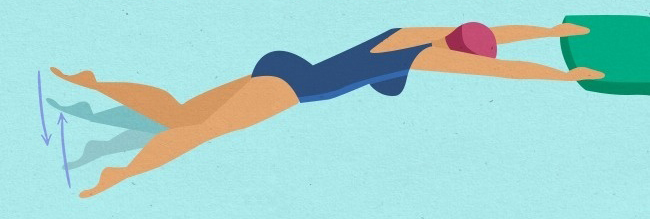
Only slightly bend your legs, trying to stretch out your feet. Move only your hips.

BREASTSTROKE
Hold on to a swimming board with your hands. Spread your legs outward and back in different directions, bending your knees, and push forward.
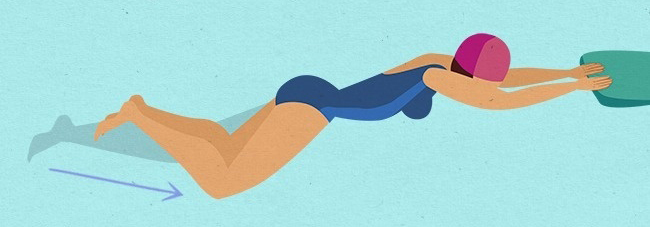
This is similar to the movement of frogs.
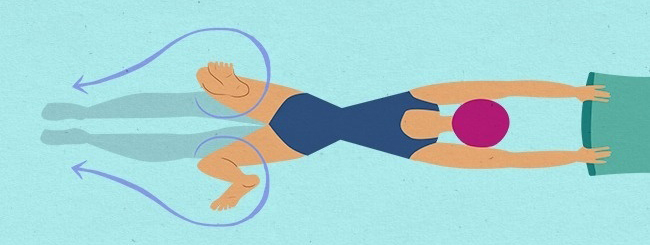
LEARNING TO USE YOUR ARMS
If you can confidently and rhythmically use your legs, you’re now ready to use your arms.
THE CRAWL
On your back: start working your legs using the crawl method.
Place your arms alongside your torso, and begin to lift them over the water, making half-circles in the air and stretching back your head as much as possible.
As they go under the water, your arms should draw half-circles at the level of your body and return to the starting position.
Your hands should be stretched out, and you should paddle in sequence.
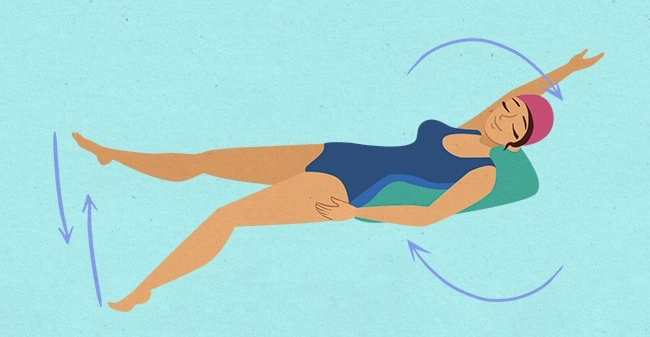
On your front with your arms in front, paddle using one after the other.
Pass your arms under the water in half-circular motions, returning to the starting position. Then paddle with the other arm.
Breathe in when your arm rises into the air, turning your head in its direction.
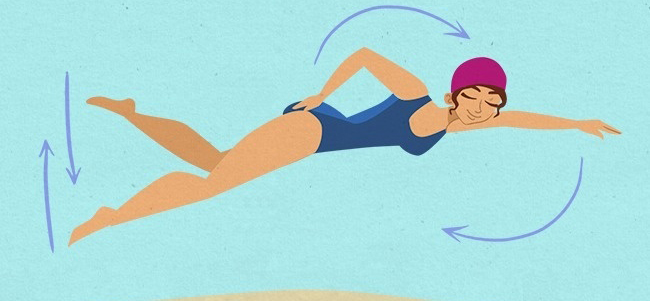
IMPORTANT: coordinate the movements of your arms and legs.
BREASTSTROKE
When pushing forward with your legs, stretch your arms forward like an arrow.
Now spread your arms out simultaneously in a symmetrical half-circular motion, bringing them together at your breastbone and then moving them back to the starting position.
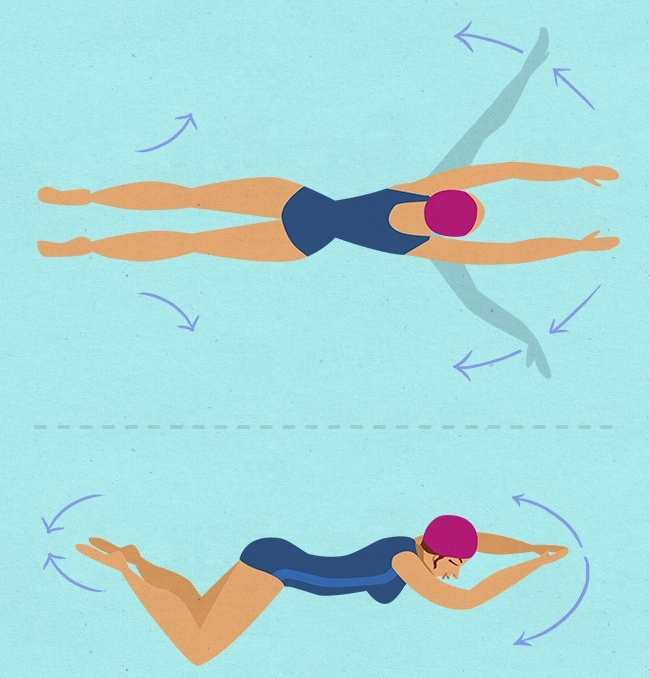
IMPORTANT: when you spread your arms out, lift your head above the water and draw in air. You can also swim with your head always raised.
TREADING WATER
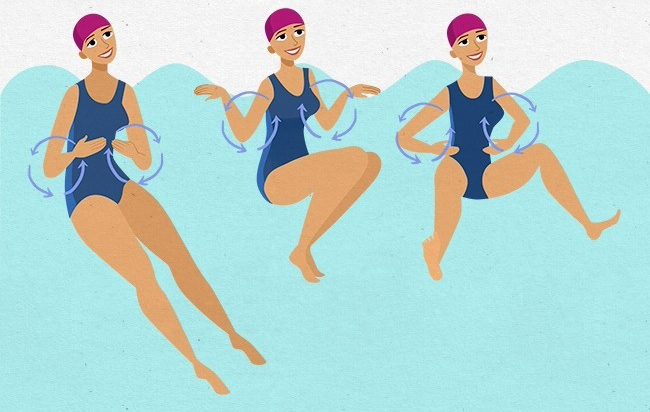
If you’re swimming confidently, you can now learn to tread water vertically For this, you need to move your legs as with breaststroke, dragging the water under you.
Spread your arms out to your sides, and make circular motions with them.
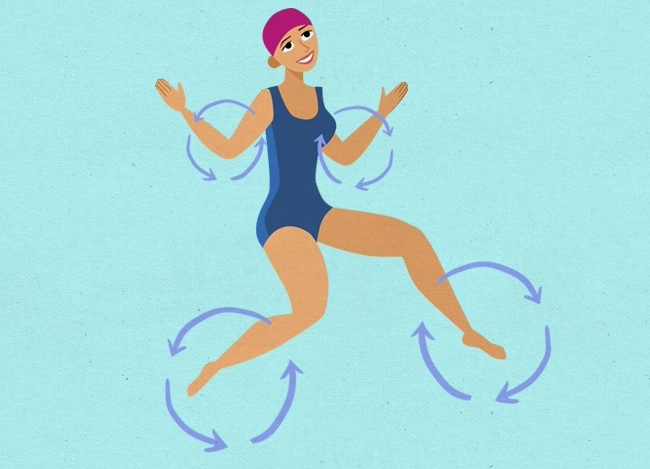
You can also tuck in your outstretched legs and imitate riding a bike, with your arms bent at the elbows and moving in circular motions away from your body.
LEARNING TO SWIM UNDERWATER
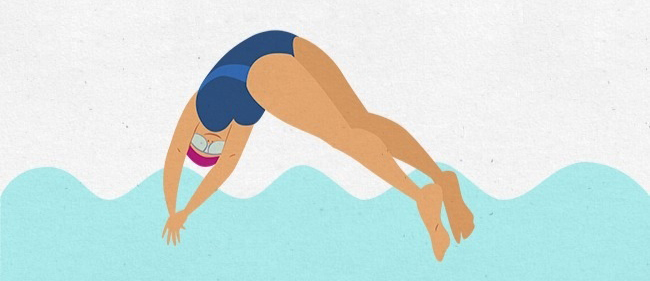
Push off the floor, and dive under the water from where you’re standing. Place your arms in front of you, forming an arrow shape. Pull your chin down toward your chest without touching it. Push forward slightly toward a point in front of you.
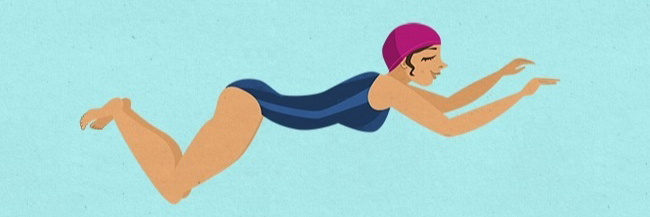
When in the water, you can use the arm movements from the breaststroke, pushing forward every time you stretch them out.
Move one leg at a time in sequence, as with breaststroke and crawl, or move like a dolphin in waves.

Wave-like movements are easy to do using flippers. ENJOY YOUR SWIM!
SAFETY COMES FIRST!
- If you experience pain, dizziness, or cramping, get out of the water immediately.
- Don’t swim if you’ve consumed alcohol.
- Diving from a pier is dangerous.
SWIM ONLY:
— on well-maintained sandy beaches; — where there are no strong currents; — where there are lifeguards; — where the water is regularly checked.
Bonus
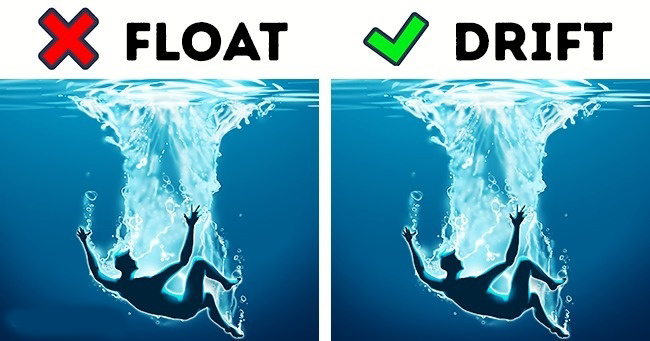
When you’re swimming in the sea, it can be easy to get caught up in the tide, keeping you away from the coast. In a situation like this, don’t lose your mind.
Also, don’t try to fight the tide: you will be unable to get out of this situation. Instead, try to control your breathing, don’t panic, and try to approach the coast by first swimming parallel to it and then little by little coming closer in a motion diagonal to the tide.
Based on materials from WikiHow


